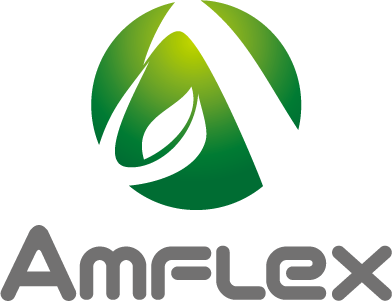What are sticky mats? And why use sticky mats ?
Sticky mats are, as the name suggests, mats that are sticky. Of course, that definition requires some more refinement to get a clearer understanding of what they are exactly.
Also known as clean room mats, these antibacterial solutions are designed to keep sanitary-sensitive places clear of substances that could compromise the need for sterility. Think environments such as hospitals, meat processing facilities and laboratories – places where the spread of foreign substances courtesy of foot traffic, for instance, can introduce contaminants that can ultimately lead to health concerns or bring in question the efficacy of products and services. So they’re absolutely paramount to certain industries.
Sticky mats basically looks like regular mats that people might place outside of the front door of their homes or businesses – the type that people will wipe their foot on to remove excess dirt, mud or snow from their shoes before entering the premises. Sticky matshave tacky polyethylene surface that, when stepped on, removes and holds onto foreign substances from the sole of shoes. So cross contamination risks are greatly minimized if not entirely eliminated.
Sticky mats can, based on the manufacturer, be acquired in a number of tackiness grades – a common one is 1/8” – sizes – such as 18" x 36", 24" x 36", 26" x 45" and 36 " x 36" – and colors – like black, white, gray and blue. They pretty much all fulfill the same function, which is to ensure that people entering a clean room environment don’t take any contaminants with them courtesy of their shoes.
HOW DO THEY WORK?
Sticky mats are used to help prevent dirt, dust and contaminants from getting into clean room environments. In order to ensure that sterile environments remain free from contagion, stickymats are manufactured with a surface that essentially removes debris from the soles of the shoes of people entering a clean room environment that must be kept sterile. These non-toxic, sticky film sheets remove dirt, but won’t leave people’s shoes or bare feet feeling sticky afterwards.
In order to make clean up a snap, the product can be bought in a peel-off sheets version, which means that sticky mats can consist of a number of stacked polyethylene film sheets that, when used to the point of being filthy, can be torn off to expose a clean, unused polyethylene film sheet that is ready to grab onto and hold onto contaminants. These sheets can also come numbered so that users will know when they’re running low on sheets. Sticky mats can be fastened to the floor using tape so that it stays in place and fulfills its purpose, which is to clear the soles of people’s shoes of contaminants that could introduce foreign substances into areas with sterility requirements. People can also opt to buy a reusable frame in which to put the film sheets. These frames, which have an anti-skid bottom, eliminate the need for using tape. Tacky mats can also be obtained in roll form so that it can cut to the desired size. This open makes sense for those who might have a variety of different size requirements.
WHAT INDUSTIRES USE STICKY MATS?
Sticky mats, which are compatible with concrete, carpet, tile and other types of surfaces, are useful for industries that include food processing, construction, aerospace, microelectronics, automotive, hospitals, pharmaceuticals, manufacturing, data centers, laboratories and anywhere else that a sterile environment is necessary. Many industries absolutely need to take any and all precautions needed to ensure that the facilities are sterile. From a cost-benefit perspective – a quick Google search will show how affordable sticky mats can be – will show just how affordable they area.
Consider the end result of people tracking dirt, dust, debris or other contaminants from outside and into a meat processing facility. Without cleanroom tacky mats, the potential for cross contamination becomes all too real. The contaminated products, in this case animals intended for human consumption, will be distributed to supermarkets and butcher shops. So the potential to cause harm to the unassuming public becomes all too clear. And what about people on constructions sites who might be walking around on contaminated surfaces? Tacky mats can help to contain whatever foreign substances they have been walking on so that it doesn’t spread wide and far.
It might be tempting to think that only certain sectors need to use sticky mats. But they can be used in other situations as well. For instance, people with pets can use them to ensure that their adventurous cat or dog doesn’t spread whatever it was walking around in all over the house. Positioning a sticky mat outside or inside the front door, will ensure that the animal’s paws are relieved of any contaminants they might otherwise have brought indoors. Do-it-yourselfers who use their home garage to work on projects can strategically position sticky mats so as to keep the saw dust or other debris in their work environment from entering the house.
OTHER BENEFITS?
Beyond the important benefits of keeping clean rooms free of contaminants and even ensuring that houses are kept as sterile as possible, sticky mats also present other benefits that should be considered.
Since cleanroom tacky mats can substantially reduce cleanup time since these solutions help to capture contaminants that can be spread by foot traffic, overall cleanup time can be dramatically reduced compared to what would be the case if sticky matsare not used. So, for an organization, the cost savings compared to the cost of buying the sticky mats can make good business sense.
Using sticky mats can also lessen wear and tear of floor surfaces by trapping dirt before it has a chance to be spread throughout the property.
USING STICKY MATS
Using sticky mats can also lessen wear and tear of floor surfaces by trapping dirt before it has a chance to be spread throughout the property.

